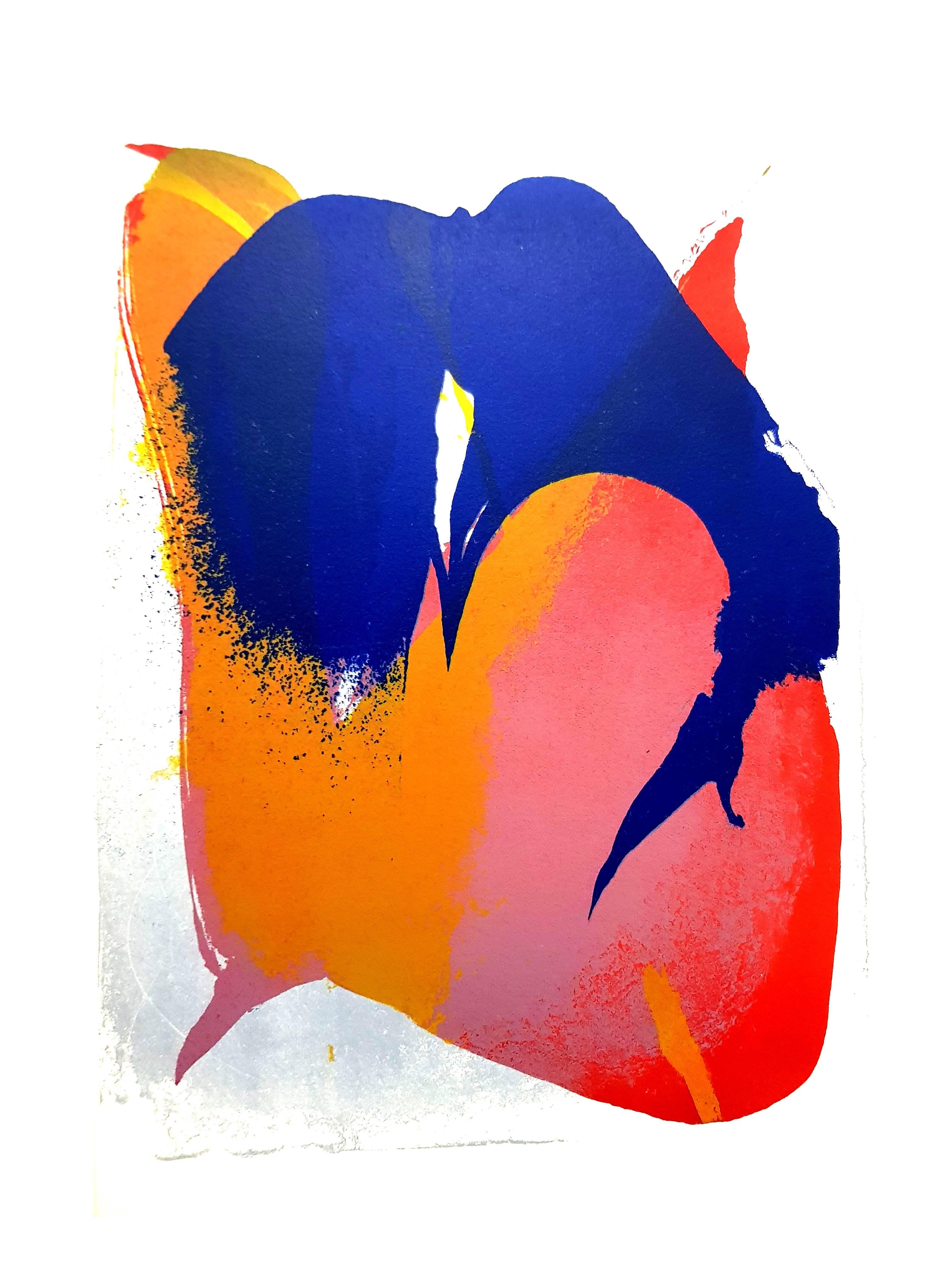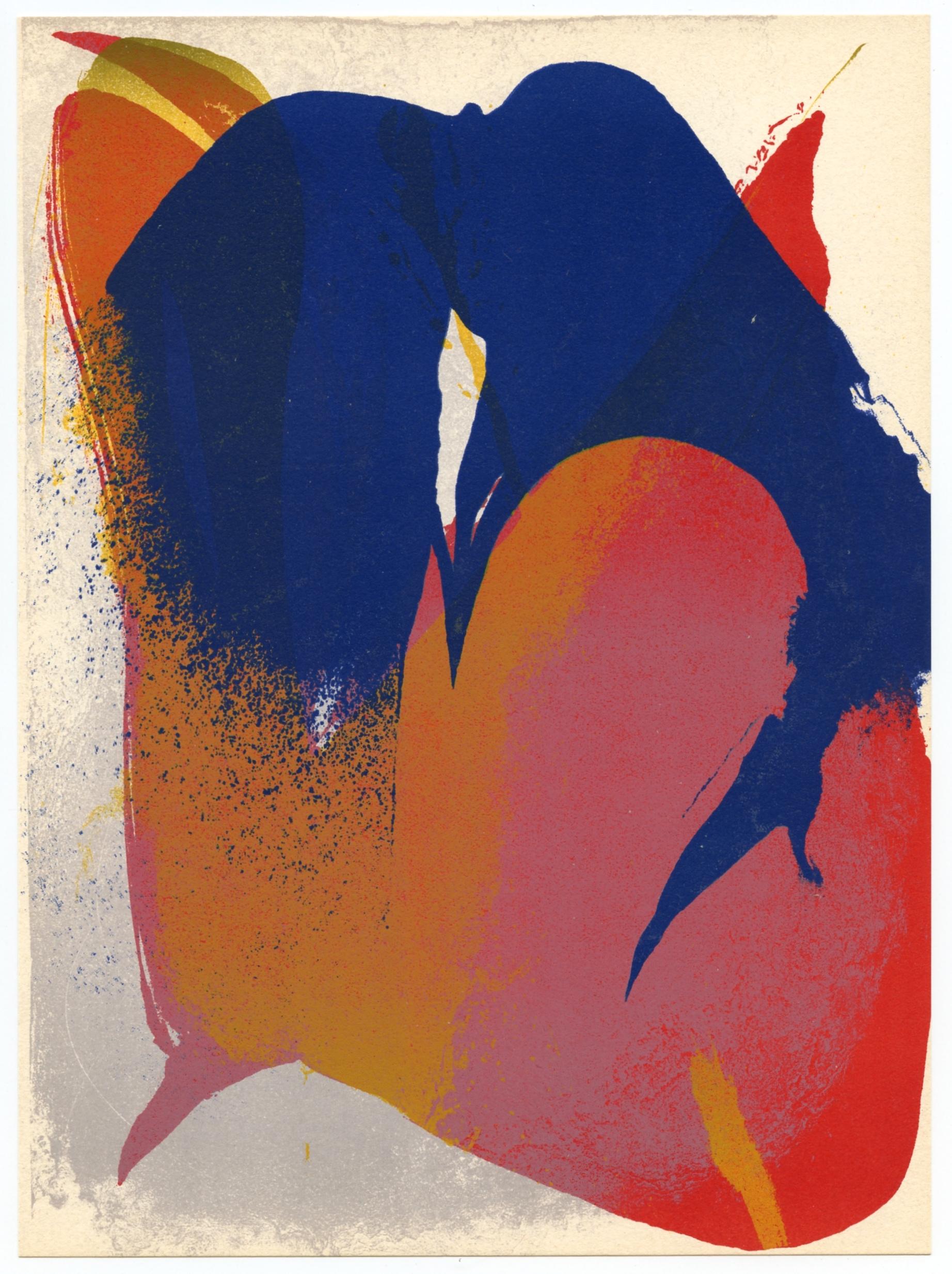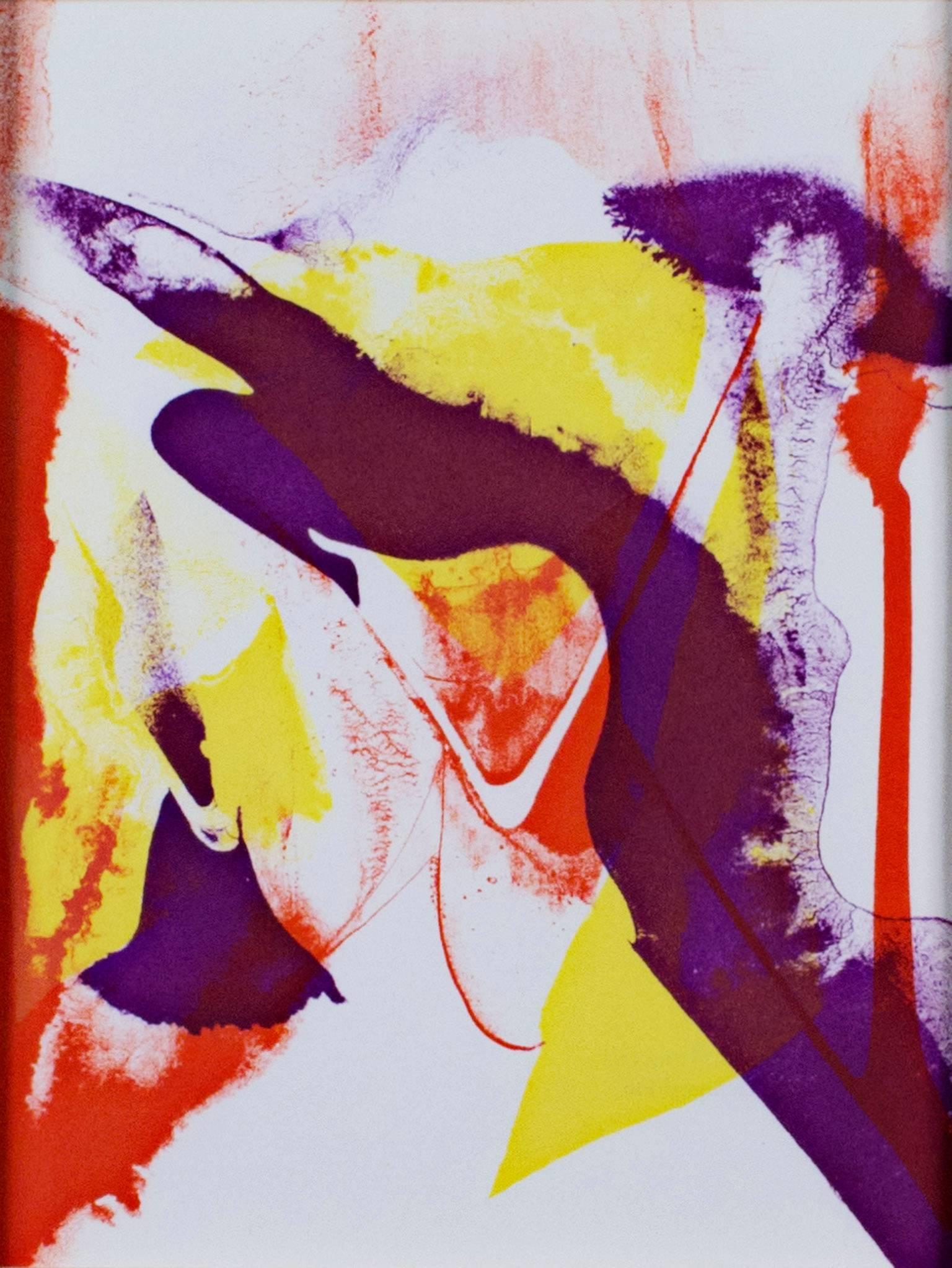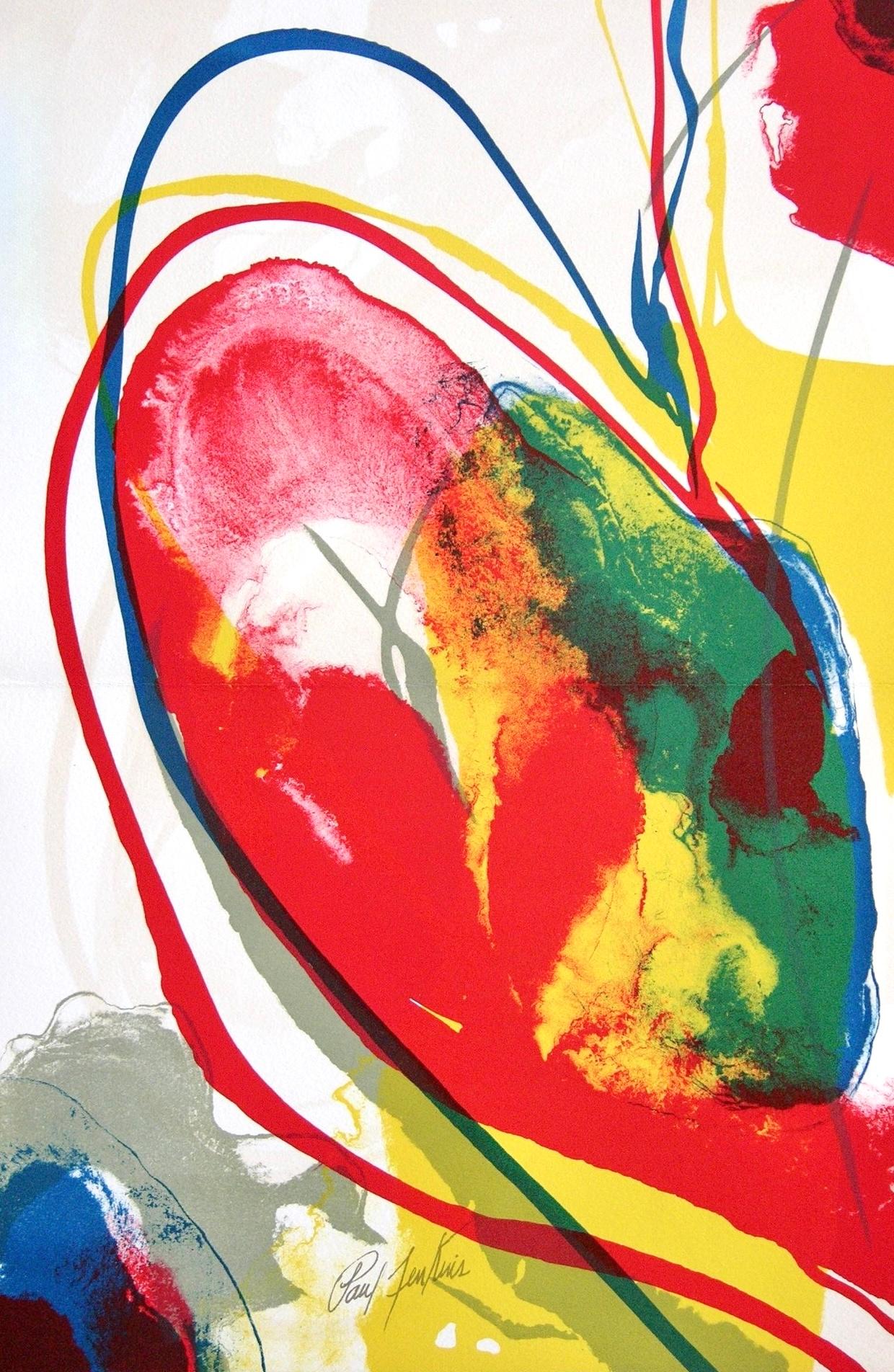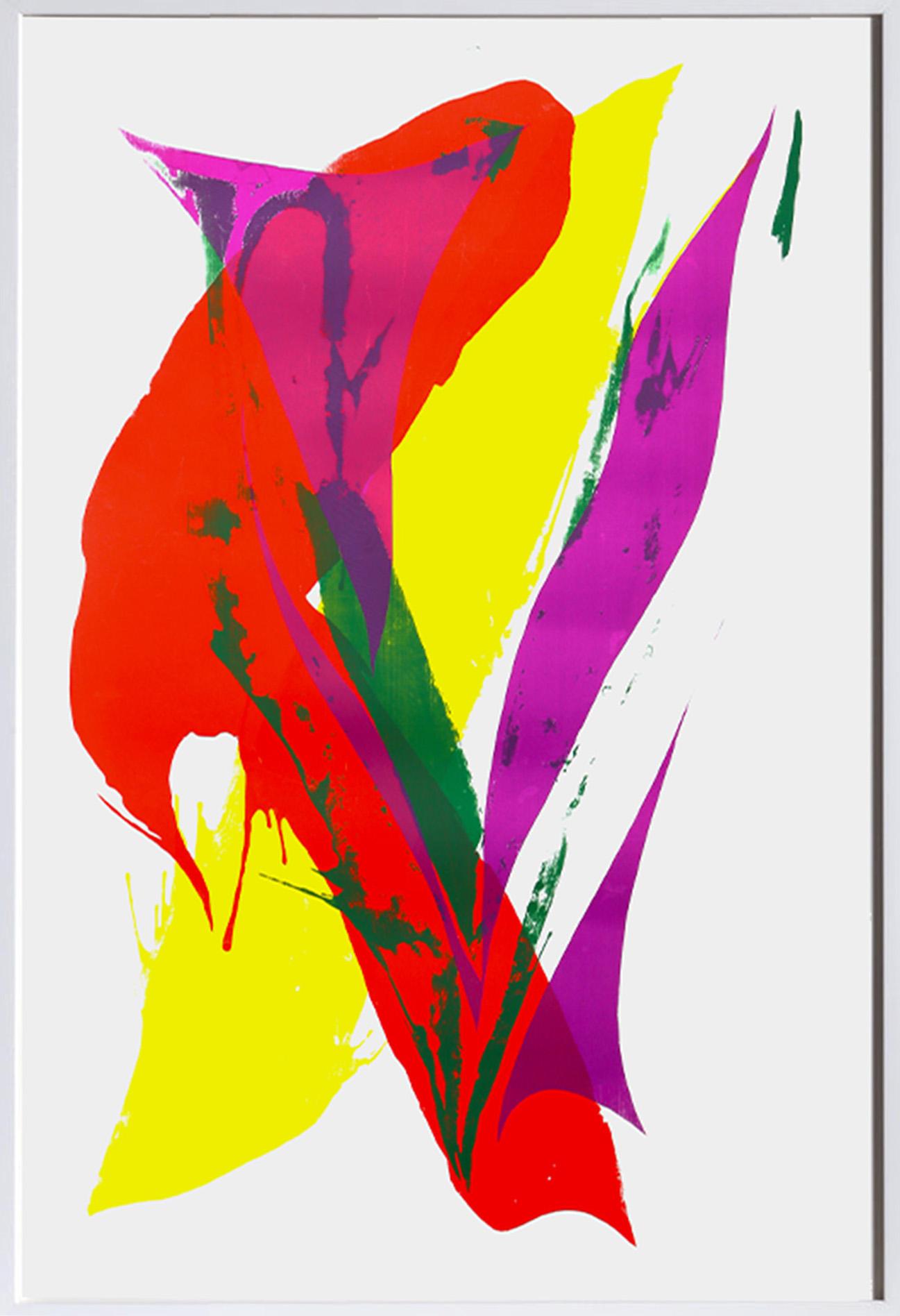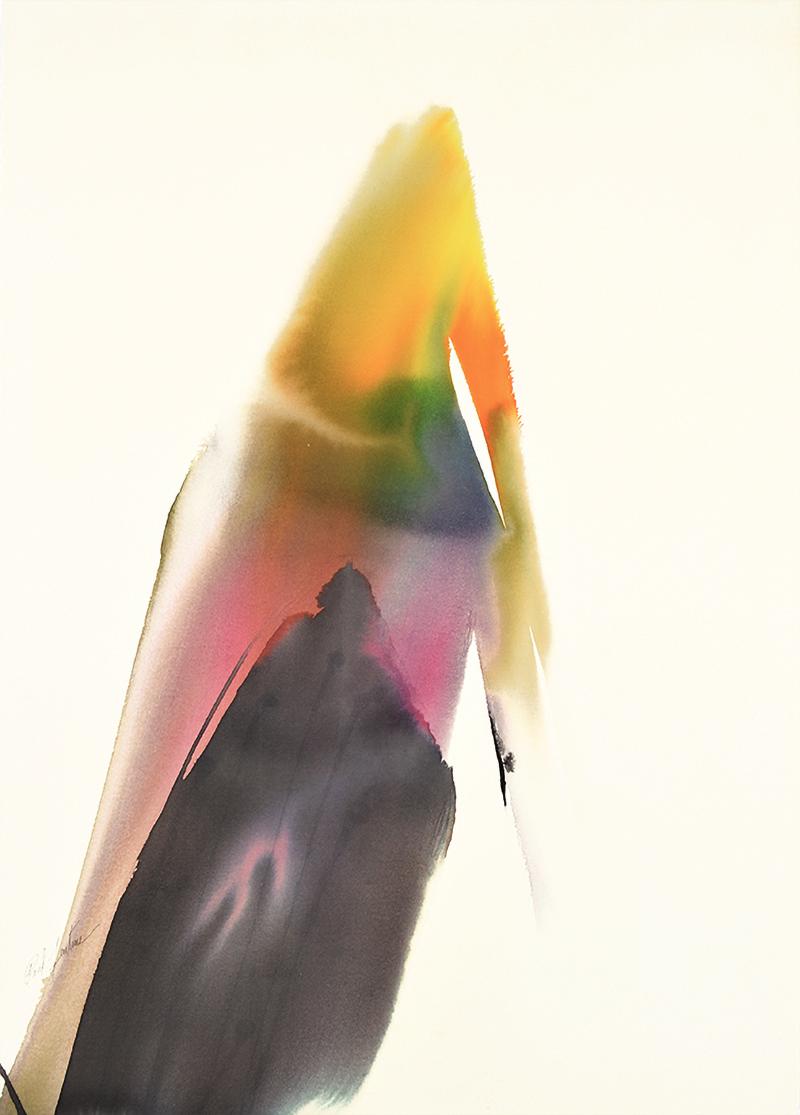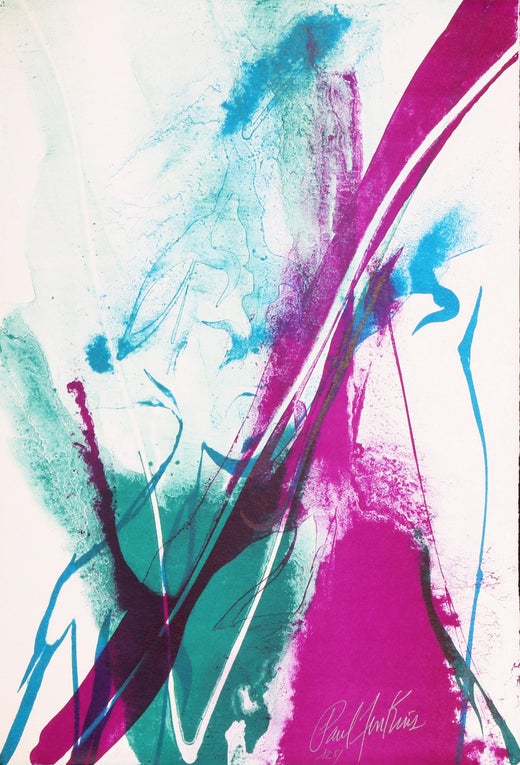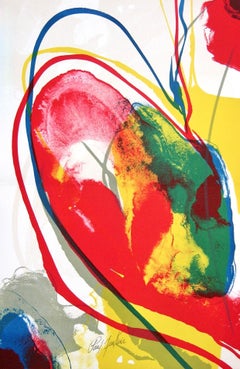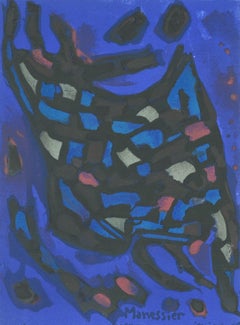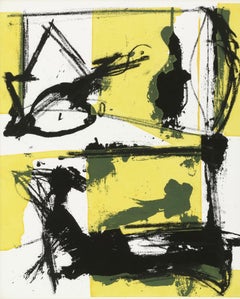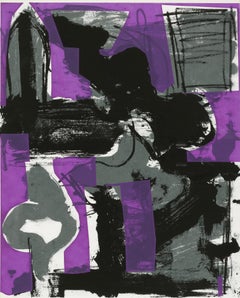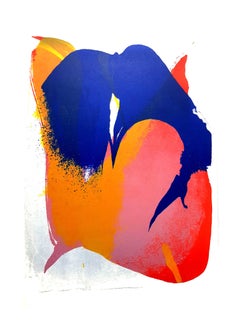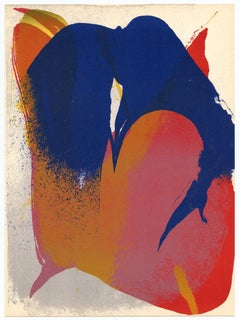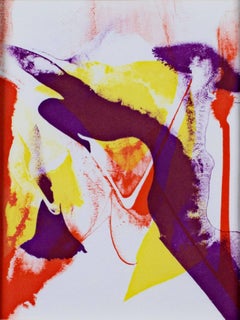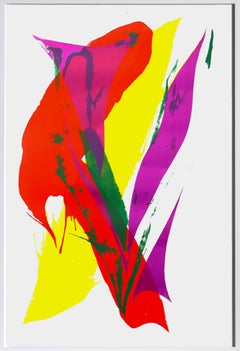This exquisite lithograph by Paul Jenkins (1923–2012), titled Sans titre (Untitled), from the album Prints from the Mourlot Press, exhibition sponsored by the French Embassy, circulated by the Traveling Exhibition Service of the National Collection of Fine Arts, Smithsonian Institution 1964–1965, originates from the 1964 edition published by Fernand Mourlot, Paris, in collaboration with the Embassy of France, Washington, D.C., and the Smithsonian Institution, Washington D.C., and printed by Mourlot Freres, Paris, October 27, 1964. This work reflects Jenkins’ mastery of color, transparency, and movement, translating his signature “controlled pour” aesthetic into lithographic form. With its fluid gradients and luminous tones, the piece embodies the artist’s spiritual pursuit of balance between intuition and control—a meditation on the metaphysical energy of color.
Executed as a lithograph on velin d'Arches paper, this work measures 10 x 7.5 inches. Unsigned and unnumbered as issued. The edition demonstrates the exquisite craftsmanship of Mourlot Freres and exemplifies Jenkins’ seamless dialogue between American abstraction and Parisian printmaking.
Artwork Details:
Artist: Paul Jenkins (1923–2012)
Title: Sans titre (Untitled), from the album Prints from the Mourlot Press
Medium: Lithograph on velin d'Arches paper
Dimensions: 10 x 7.5 inches (25.4 x 19.05 cm)
Inscription: Unsigned and unnumbered as issued
Date: 1964
Publisher: Fernand Mourlot, Paris, in collaboration with the Embassy of France, Washington, D.C., and the Smithsonian Institution, Washington D.C.
Printer: Mourlot Freres, Paris
Condition: Well preserved, consistent with age and medium
Provenance: From the album Prints from the Mourlot Press, published by Fernand Mourlot, Paris, 1964
Notes:
Excerpted from the album, This exhibition is a manifestation of Franco-American friendship and we would be very happy if it is of interest to all those who visit it. I wish to thank Mrs. Annemarie Pope for proposing and organizing this exhibition of the work of the artists who have used our press. We are honored that Mr. Herve Alphand, Ambassador of France to the United States, and Mr. Edouard Morot-Sir, Cultural Counsellor at the French Embassy in New York, will sponsor this exhibition. I express to them my thanks and appreciation. As for the artists themselves, who executed the originals contained in this catalogue, I can only say simply, "Thank you." They are all friends. We would have liked to include not just the twenty-four illustrations in this small book, but many more. During the year 1963, we lost three great artists who were faithful friends of our press. Thanks to Mrs. Georges Braque, Mr. Louis Carre, and Mr. Edouard Dermit, who have been able to pay our respects to Georges Braque, Jacques Villon and Jean Cocteau. The great Henri Matisse is also with us, since Mrs. Du-thuit-Matisse and her brothers have allowed us to use an unpublished original lithograph. Thanks to them all for their generosity. —Fernand Mourlot. The lithography at Mourlot printing press by Jean Adhemar, Curator of prints at the Bibliotheque nationale. Acknowledgments, Fernand Mourlot has long been the acknowledged master printer of France in every field, from lithographs to fine books to posters. The unfailing quality of his work commands the respect of museums, collectors, and most important of all, the artists themselves. Every product of his workshop bears the mark of Mourlot's discipline and craft and can truly be called an ideal collaboration between artist and artisan. The result of years of thoughtful planning, this special exhibition presents an accurate portrait of the Mourlot Press. We are greatly indebted to Fernand Mourlot, who made the selection, supervised the production of the catalogue, and gave endless time and energy to the details of preparation. This album was finished in Paris on 27th October 1964. The original lithographs and the reproductions were printed on the presses of Mourlot. The Imprimerie Nationale, Director Andre Brignole, was responsible for the typography. The edition has been limited to MM examples on Velin d'Arches and CC on Velin de Rives, reserved for the artists, the staff and the friends of the Imprimerie Mourlot.
About the Publication:
Prints from the Mourlot Press, published in Paris by Fernand Mourlot in 1964 in collaboration with the Embassy of France and the Smithsonian Institution, celebrated the profound artistic partnerships that defined 20th-century printmaking. The portfolio accompanied a traveling exhibition organized by the Smithsonian’s National Collection of Fine Arts and presented at major institutions across the United States between 1964 and 1965. Containing twenty-four original lithographs by leading modern artists—including Pablo Picasso, Henri Matisse, Georges Braque, Joan Miro, Marc Chagall, Alexander Calder, Fernand Leger, Paul Jenkins, and Jean Cocteau—the publication chronicled the collaborative artistry of Mourlot Freres, whose Paris workshop elevated lithography to a fine art. Each plate demonstrated the mastery of color, composition, and craftsmanship that defined postwar printmaking, while the edition itself stood as a symbol of Franco-American cultural exchange.
About the Artist:
Paul Jenkins (1923–2012) was an American abstract expressionist painter whose radiant veils of color, fluid compositions, and pioneering “controlled pour” technique made him one of the most distinctive and spiritually profound figures of postwar modernism. Born in Kansas City, Missouri, Jenkins studied at the Kansas City Art Institute under Thomas Hart Benton before attending the Art Students League of New York, where he worked under Yasuo Kuniyoshi and Morris Kantor and was influenced by the spiritual abstraction of Wassily Kandinsky, the surrealist imagination of Salvador Dali, and the lyrical biomorphism of Joan Miro. In New York, he became part of the postwar avant-garde, engaging with the legacies of Pablo Picasso, Alexander Calder, Alberto Giacometti, Marcel Duchamp, and Man Ray, and developing a personal aesthetic that merged the gestural vitality of Abstract Expressionism with the transcendence of Color Field painting. Jenkins’ revolutionary process, which he called “guided pouring,” involved directing thinned pigments across unprimed canvas to create luminous, transparent layers that captured both spontaneity and precision. His paintings—often titled with the word Phenomena to suggest his fascination with natural and spiritual forces—embodied his belief in color as a living, intelligent energy that revealed the unseen rhythms of existence. Dividing his time between New York and Paris, he became an international ambassador for American abstraction, exhibiting at the Museum of Modern Art, the Whitney Museum, the Tate, and the Centre Pompidou, while his works entered over 80 major museum collections worldwide. Throughout the 1960s and 1970s, Jenkins achieved global acclaim for paintings such as Phenomena Wind Across the Canyon (1963), Phenomena Prism Veil (1965), and Phenomena Ithaca (1954–55), which exemplified his command of transparency, light, and chromatic harmony. His later experiments in glass and bronze sculpture expanded his exploration of luminosity into three dimensions, while his practice continued to reflect his fascination with alchemy, Jungian psychology, and the unity of natural forces. Jenkins’ serene yet powerful canvases bridged intuition and intellect, chaos and control, earning him comparison to masters like Rothko and Frankenthaler while influencing later artists including Pat Steir, Sam Gilliam, and Gerhard Richter. His legacy endures as that of a modern mystic who transformed abstraction into a form of meditation, revealing the poetry of color and the metaphysics of perception. Standing alongside Pablo Picasso, Alexander Calder, Alberto Giacometti, Salvador Dali, Joan Miro, Wassily Kandinsky, Marcel Duchamp, and Man Ray, Paul Jenkins remains a defining figure of modern art—a painter-philosopher whose chromatic visions continue to inspire artists, collectors, and museums around the world. His highest auction record was achieved by Phenomena Ithaca (1954–55), which sold for 1.59 million USD at Sotheby’s, New York, on May 16, 2013, reaffirming his place among the most visionary, poetic, and collectible artists of the 20th century.
Paul Jenkins Sans titre Untitled Prints from the Mourlot Press Fernand Mourlot Paris 1964 lithograph Abstract Expressionism Color Field.
